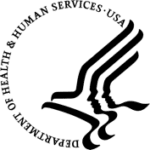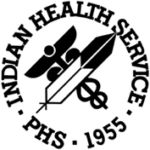Calls To Action
Native Land
Research whose land you are on and learn about the history of the AI/AN people who live there. Native-Land.ca is a useful tool for researching these matters.
Dos and Don'ts
- Do not wear other people’s traditional clothing as a costume.
- Hold your friends and family accountable when they use problematic language about AI/ANs.
- Be an ally: Learn with humility, center the impacted, step up or stand back when asked to do so.
- Learn about the difference between cultural appreciation and appropriation:
- Do: Buy art, textiles, jewelry, music made by AI/AN people
- Do: Attend public events lead by AI/AN people
- Don’t: Buy “Native style” art, jewelry, textiles made by non-Natives
- Don’t: Attend traditional AI/AN ceremonies lead by non-Natives (or facilitate them)
Stereotypes and Microaggressions
Avoid using stereotypes or forcing AI/AN people to endure microaggressions. Common examples of these include:
- But you don’t look Indian?
- How much Indian are you?
- What are you?
- You’re really well spoken.
- Let’s have a powwow (when referring to a meeting, discussion, etc.)
- Do you live in a tepee?
- I need to find my tribe (when referring to finding your community, or like-minded people).
Center Culture on the Pathway to Health
Center culture on the pathway to health. This approach recognizes tribal sovereignty and self-determination. “Indigenous culture as treatment addresses not only physical and mental health disparities but also accounts for structural issues of inequality and policy injustices, medical discrimination, marginalization, and exclusion” (BlackDeer, 2023).
Supporting Children and Families
To support children and families in regaining their cultural identity, remind them there is more than one way to begin their journey. They can start connecting through public events like ceremonies, powwows, traditional art, literature, film, social media, or through AI/AN service providers.
Culturally Relevant Education Models
Parents with family histories disrupted by the boarding schools or the child-welfare system benefit from parent education that models culturally relevant parenting strategies promoting family and community well-being.
Trauma Responses
Trauma responses vary from person to person. Creating a safe space for open communication about potential activators is crucial to avoid re-experiencing trauma. Possible accommodations can include, but are not limited to, actions such as warning participants before anticipated loud noises, asking for permission to physically touch someone, and using calm voices.
Nothing About Us Without Us
Nothing About Us Without Us. Non-Native educators and administrators must include AI/AN students, families, and tribal communities in the development of their culturally relevant programs and curricula. This is a crucial step in ensuring the material is accurate, culturally sensitive, and without stereotypes or microaggressions that might retraumatize AI/AN students.
Educators Should...
- Advocate for appropriate support and services and make sure students receive them.
- Create a safe and supportive classroom environment that allows students to feel comfortable and safe while learning.
- Build a solid relationship with their students and their families.
Protective Factors for AI/AN Youth
Protective factors for AI/AN youth include personal wellness, positive self- image, self-efficacy, family and non-familial connectedness, positive opportunities, positive social normal, and cultural connectedness.
Culture is Prevention
Use traditional practices in recovery and ongoing therapies with your clients. Traditional drumming has been used for AI/AN people with substance use disorders and is a promising healing activity when coupled with traditional SUD therapies (Dickerson et al., 2012).
Community Leaders
Community leaders should engage with how the Indian boarding schools touch almost every aspect of modern life for AI/AN people. These actions can include sending out newsletters, passing resolutions to honor victims and survivors, hosting community events and observances, and creating spaces for healing.
Highlights
Tracing Your Ancestors
It is important to note that children’s experiences at Indian boarding schools were diverse and complicated. Get to know your clients, ask questions, and listen to their perspectives. Be informed about the history of AI/AN assimilation policy, be ready to learn from each person’s lived experience and seek supports when necessary. If you are interested in tracing your ancestors’ experience at Indian boading schools, The National Native American Boarding School Healing Coalition will be launching an online platform to help. In the meantime, please see their document “Locating Relatives at U.S. Indian Federal Boarding Schools Research Pathfinder.”
Please take a moment to make sure this is the right time to go down this path, as this work can activate a secondary trauma response. Also keep in mind that not every survivor defines their boarding school experience as adverse—AI/AN people may be at various stages of reconciliation with this experience, and it is important to respect their individual healing processes.
Tracing Your Ancestors
“Without griefwork—without a voice—trauma is passed from one generation to the next.” –Jane Middleton-Moz, MSCP
Grief Work
“Without griefwork—without a voice—trauma is passed from one generation to the next.” –Jane Middleton-Moz, MSCP
AI/AN Children
AI/AN children are still removed from their families at disproportional rates. AI/AN children are up to four times as likely to end up in foster care as compared to non-AI/AN children. Additionally, only 38% of AI/AN children are placed in care with kin, and 52% of the children in the foster care system are adopted by non-Native families (Disproportionate, 2021 and Casey Family Programs, 2022).
Isolation
It is important to consider the isolation these students felt while in boarding school. Unlike today, they did not have access to cell phones or social media to keep in touch with loved ones back home. The only way to communicate was through letters, many of which went unanswered. The isolation from family and culture led many children to believe they were not wanted or even forgotten. This cultural estrangement has reverberated through generations and is something Native people are still grappling with today.
Educators, Medical Professionals, and Behavioral Health Providers
Educators, medical professionals, and behavioral health providers should be sensitive to environmental cues that may cause a reaction from a child who has experienced trauma. By anticipating difficult times and providing support, professionals can help to create a safe and supportive environment for children and families who have experienced trauma.
Student Survivors
“Some of our most important work with student survivors is simultaneously simple and complicated—bearing witness to their experiences. Being present for student survivors and the pain and challenges they endure can be difficult work, yet through that process, we are also holding space for the possibility of resilience to emerge and students to be able to fully participate as engaged learners” (Shalka, 2015).
Road To Healing
As the Road to Healing Reports are released, it is important to note that retraumatization may occur in your communities. Health care providers, tribal administrators, and educators should be prepared for potential influxes of patients, students, and community members in crisis. Increase staff trained in trauma-informed care during the days and weeks surrounding the release of the Road to Healing Reports and encourage staff to practice self-care while assisting community members in crisis.
Native Language
Tribal communities with many Native language speakers have lower suicide rates (Ozbolt) and tribal communities with language and cultural education programs have higher high school graduation rates (Meza). Speaking a unique language, and being a part of bringing them back, builds culture as a tribe. And the resilience in preserving and revitalizing language is a big step toward healing from trauma (Marshall, Antoine).



